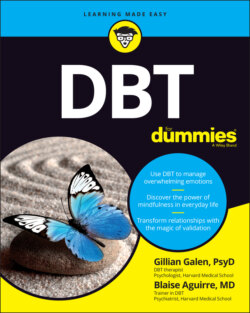Читать книгу DBT For Dummies - Gillian Galen - Страница 99
Identifying and Handling Emotional Triggers
ОглавлениеEveryone’s brain creates powerful associations between things that hurt them and the people associated with that hurt. For example, once you’ve been attacked in a dark alley, even walking by an alley can lead to a physical reaction. Interestingly, it’s easier to recognize and forgive our own behavior and misbehavior because we understand the connection between our response and whatever is triggering that response. However, it’s also true that other people have reasons for the reactions that they have. Just because we don’t understand why they are doing what they are doing doesn’t mean that they don’t have their own triggers.
Particularly when someone has experienced trauma, abuse, and invalidation, this can lead to unexamined and unprocessed emotions that can be triggered by anything that leads to recollection of the events. The triggered person typically has a fair grasp on reality, but their emotional response fails to reflect the current situation; they may feel suspicious of the intentions of those around them or anxious around friends, or become very angry for a seemingly trivial slight.
The point is that whereas you might understand your own reactions to triggers, it’s important to realize that the reason a person is acting the way they are could be because they are triggered as well.
The most important reason to identify triggers is to either limit their disruption in your life or minimize the power they have in controlling your actions. The following sections provide more insight into identifying triggers.
